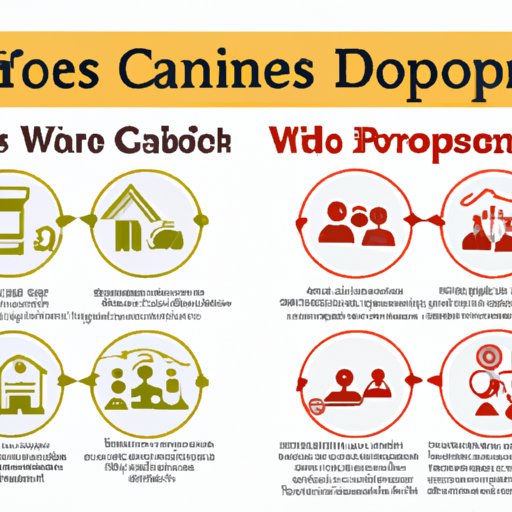Introduction
For working parents, finding quality daycare is essential. But the cost of daycare can be a significant burden. According to U.S. News & World Report, the average cost of daycare can range from $5,000 to $22,000 per year, depending on the type of care and the geographic region. This article explores how much daycare costs, how to compare prices between different cities, how to create an in-depth budget for childcare, and how to save money on daycare expenses.
Comparing the Average Cost of Daycare in Different Cities
The cost of daycare varies widely across the United States. According to Care.com’s 2019 Cost of Care Survey, the most expensive cities for daycare include San Francisco, Boston, and Washington D.C. On the other hand, the least expensive cities for daycare include Detroit, Cleveland, and Memphis.
In addition to geographic location, the cost of daycare is also impacted by the type of care. For example, according to the survey, nanny care is the most expensive form of daycare while center-based care is the least expensive. It is important to note that the cost of daycare may also depend on the age of the child, the number of hours needed, and the availability of subsidies.
Creating an In-Depth Guide to Daycare Costs
When creating a budget for daycare, it is important to consider the various factors that can impact the cost. These factors include:
- Type of daycare (e.g. home-based or center-based)
- Number of hours needed
- Age of the child
- Location (e.g. city, state)
- Payment options (e.g. cash, credit cards, subsidies)
- Tax credits and deductions
- Discounts and deals offered by daycare providers
It is also important to research payment options and subsidies available. Depending on the family’s income level and other factors, there may be eligibility requirements for certain programs. For example, the Child Care and Development Fund (CCDF) provides financial assistance for low-income families.

Analyzing the Pros and Cons of Different Types of Daycare Services
When considering daycare options, it is important to evaluate the pros and cons of each type of care. Home-based care typically offers more personalized attention and a more flexible schedule. However, it may be more expensive than center-based care. Center-based care can often provide more educational opportunities, structure, and socialization. However, it may not be as flexible or personalized as home-based care.
Other options to consider include drop-in care, family daycare, and online daycare. Each option has its own advantages and disadvantages, so it is important to do research to determine which type of care best fits the family’s needs.

Exploring How Government Programs Impact Daycare Costs
Government programs can help offset the cost of daycare. The CCDF provides financial assistance to eligible families, allowing them to access affordable, quality daycare. Other programs, such as the Head Start Program, provide free daycare for low-income families. Additionally, some states offer tax credits and deductions to help offset the cost of daycare.
It is important to research eligibility requirements for government programs. For example, the CCDF requires families to meet certain income levels, as well as other criteria. It is also important to note that some programs may have waiting lists, so it is important to apply early.
Highlighting Tips for Saving Money on Daycare
There are several strategies that parents can use to save money on daycare. For example, shopping around for the best deals can help parents find affordable options. Additionally, leveraging tax breaks and taking advantage of discounts can help reduce the cost of daycare.
It is also important to remember that daycare costs are an investment in the child’s future. Investing in quality daycare can help ensure that the child receives the education and socialization they need to succeed.

Discussing the Benefits of Investing in Quality Daycare
Investing in quality daycare can provide numerous benefits for children. According to a study conducted by the National Institute for Early Education Research (NIEER), high-quality daycare centers can positively impact a child’s cognitive development, socialization skills, and emotional wellbeing. Additionally, quality daycare facilities can help address safety concerns, promote healthy learning environments, and encourage positive interactions with peers.
Conclusion
Daycare costs can be expensive, but there are ways to manage the expenses. By researching the average cost of daycare in different cities, creating an in-depth budget for childcare, exploring payment options and subsidies, and leveraging discounts and tax breaks, parents can find ways to afford quality daycare. Investing in quality daycare can help ensure that children receive the education and socialization they need to succeed.
(Note: Is this article not meeting your expectations? Do you have knowledge or insights to share? Unlock new opportunities and expand your reach by joining our authors team. Click Registration to join us and share your expertise with our readers.)
